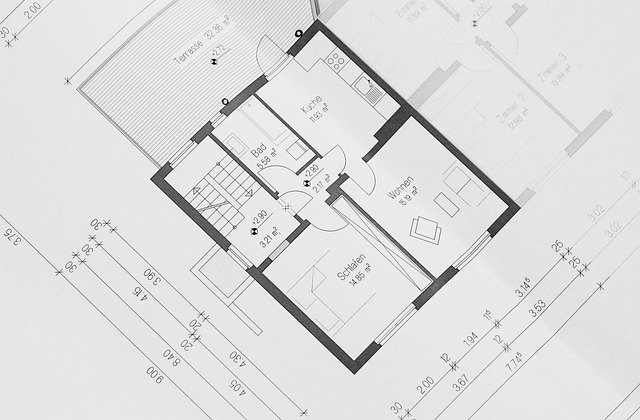How to Design a House Step by Step
Designing a house is a process that starts with simple ideas and grows into a full plan. This article explains how to think about space, draw basic layouts, and choose features like rooms, windows, and doors. Learn how each step adds detail to make a complete design that fits both style and function.

Creating a home that reflects your lifestyle while meeting practical needs requires a structured approach. The house design process involves multiple stages, each building upon the previous one to transform ideas into architectural plans and ultimately into a livable space. Understanding these phases helps homeowners make informed decisions and collaborate effectively with design professionals.
What Are the Key Phases of House Design?
The house design process typically unfolds in several distinct phases. It begins with the pre-design stage, where you establish your budget, define your needs, and gather inspiration. Next comes schematic design, where broad concepts take shape through sketches and preliminary drawings. The design development phase refines these concepts, adding details about materials, systems, and spatial relationships. Construction documents follow, providing detailed specifications for builders. Finally, the construction administration phase ensures the design is implemented correctly. Each phase requires careful consideration and often involves revisions based on feedback, site conditions, or budget adjustments. Moving methodically through these stages helps prevent costly mistakes and ensures the final design meets your expectations.
How Does Residential Design Planning Work?
Residential design planning starts with a thorough assessment of your needs, lifestyle, and site conditions. Designers typically conduct interviews to understand how you live, work, and entertain at home. They analyze the building site for factors like sun orientation, views, topography, and local zoning regulations. This information shapes the initial design concepts. Planning also involves establishing realistic budgets and timelines. Designers create floor plans that optimize space usage, traffic flow, and room relationships. They consider structural requirements, mechanical systems, and energy efficiency from the outset. The planning process is collaborative, with regular meetings to review progress and make adjustments. Good planning addresses both immediate needs and future flexibility, ensuring your home can adapt as your life changes.
What Role Does a Home Designer Play?
A home designer serves as the creative and technical guide throughout the design process. They translate your vision and requirements into workable architectural plans. Designers bring expertise in spatial planning, building codes, construction methods, and aesthetic principles. They help you navigate complex decisions about layout, materials, and systems while keeping the project within budget. Beyond creating drawings, designers coordinate with engineers, contractors, and other specialists. They troubleshoot problems, suggest alternatives when challenges arise, and ensure design intent is maintained during construction. Some designers specialize in specific styles or project types, while others offer broad expertise. Choosing the right designer involves reviewing portfolios, checking references, and ensuring their approach aligns with your goals. A skilled designer balances creativity with practicality, helping you avoid common pitfalls while achieving a home that functions beautifully.
How Do You Approach Home Interior Design?
Home interior design focuses on creating functional and aesthetically pleasing indoor spaces. The process begins with understanding how each room will be used and who will use it. Designers develop color schemes, select finishes, and specify fixtures that complement the architectural design. They consider lighting, both natural and artificial, as it dramatically affects how spaces feel. Furniture layouts are planned to optimize flow and functionality. Storage solutions are integrated to keep spaces organized. Interior design also addresses acoustics, air quality, and thermal comfort. The best interior designs reflect the occupants’ personalities while maintaining cohesion throughout the home. Designers often create mood boards and samples to help clients visualize proposals before making final selections. Attention to detail in interior design transforms a house into a personalized, comfortable home.
What Are Common Interior Design Challenges?
Several challenges frequently arise during interior design projects. Budget constraints often require creative solutions to achieve desired looks with available resources. Balancing aesthetics with functionality can be tricky, especially in multipurpose spaces. Many homeowners struggle with spatial limitations, needing to maximize small areas or awkwardly shaped rooms. Coordinating timelines between various trades and deliveries requires careful management. Selecting materials that are both beautiful and durable for specific uses demands expertise. Lighting design often proves more complex than anticipated, requiring layered approaches for different activities and moods. Color selection can be overwhelming given endless options. Integrating technology and smart home features while maintaining design integrity presents modern challenges. Working with existing architectural elements in renovations may limit design flexibility. Communication gaps between homeowners and designers can lead to misunderstandings. Addressing these challenges requires experience, flexibility, and clear communication throughout the design process.
Bringing Your Design Vision to Life
Successful house design requires patience, collaboration, and attention to detail. Start by clearly defining your priorities and establishing a realistic budget with contingency funds. Research and interview multiple designers to find the right fit for your project. Maintain open communication throughout the process, asking questions and providing feedback promptly. Be prepared to make compromises when necessary, balancing wish-list items with practical constraints. Document decisions and changes to avoid confusion later. Trust your design team’s expertise while staying engaged in the process. Remember that good design takes time, and rushing through phases often leads to regrets. The investment in thoughtful, comprehensive design pays dividends in a home that serves you well for years to come, combining beauty, functionality, and personal expression in every detail.




